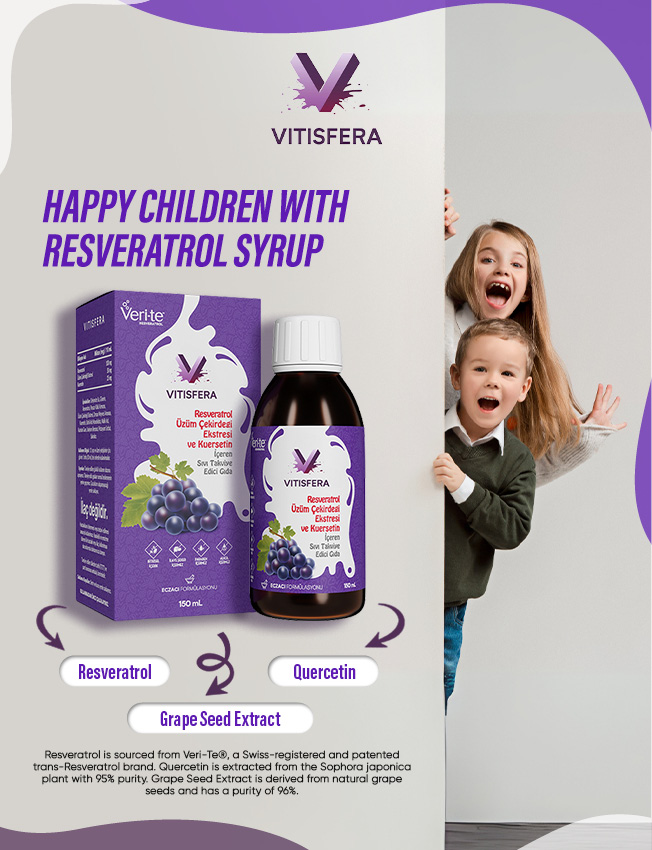Newborn Baby Clothing Selection

Mothers instinctively have a meticulous care for their babies from the very beginning. In the delicate phase of infancy, where every aspect needs to be handled with care, attention must be paid to babies in every way possible. Clothing selection is one of the aspects that require careful consideration.
At first glance, all baby clothes may seem very cute. However, when attention is paid to fabric and accessory features, what appears to be a cute outfit can harm the baby. Therefore, when buying clothes, attention should be paid to the fabric rather than just the appearance. In recent years, breathable fabrics have been produced for children’s clothing, allowing the baby’s skin to breathe without hindrance. These types of fabrics do not carry allergy risks and do not irritate the skin. By selecting such clothes, the baby’s skin health can be significantly preserved. Another thing to consider in baby clothing is that garments should be soft and flexible. Soft fabrics do not irritate or harm the baby’s skin, while flexible fabrics do not restrict the baby’s movement and provide comfort.
Especially for expectant mothers, who are expecting their first baby, buying an excessive number of clothes without considering the baby’s rapid physical development is one of the mistakes made in baby clothing selection. Since babies grow very quickly in the newborn stage, the clothes purchased cannot be worn more than once or twice. The most preferred type of clothing for babies in this stage is baby jumpsuits. Along with baby jumpsuits, snap-fastened bodysuits, pajama sets, t-shirts, socks, and hats are also essential baby clothing items. On the other hand, dresses, cardigans, pants, and sweaters are indispensable baby textile products for winter babies.
The characteristics of clothes to be purchased for a baby who has passed the newborn stage should be different from those in the newborn stage. Considering that the baby starts to move independently and play games, clothing selection during this period should be towards comfortable clothes that provide freedom of movement, adjustable to the body. Also, during this period, considering the baby’s desire to eat by themselves, their curiosity about colorful objects, and the examples of creativity they will show in playing, choosing clothes made of stain-resistant fabrics can also make it easier for the mother.
How To Care For Baby Clothing?
Baby clothes can be preserved by washing them with pure water and soap. In addition, unscented and perfume-free detergents should be used instead of perfumed and colored detergents. If the garment does not have any specific washing instructions, it can be washed at a low temperature that will not deform the fabric. When ironing, avoiding very high heat prevents clothes from irritation and preserves the delicate structure of the fabric.
How Should A Newborn Baby Be Dressed?
Especially, attention should be paid to the fabrics of newborn baby clothes, which absorb sweat, allow the skin to breathe, and facilitate ventilation. In the first few months, jumpsuits can be preferred for innerwear, and socks, gloves, and a hat should be worn. Since babies’ hands and feet are often cold, it should be checked whether they are cold by touching their chest or back. Babies can be dressed one layer more than adults. Care should also be taken to cover the baby while sleeping. Clothes should not restrict the newborn’s movements. Tight swaddling can prevent the baby from breathing and hinder the development of the hip joint. To facilitate holding the baby while breastfeeding, the baby’s arms can be loosely wrapped, covering them lightly. Hands should be clean before every contact with the baby. In addition, when choosing baby clothes, attention should be paid to whether they will not disturb the baby when worn, will pass easily from the head, and will provide convenience to the person changing the diaper.
Things To Consider
• When shopping for clothes, the baby’s weight, not age, should be taken into account.
• Before buying clothes, read the specific usage instructions for the product. Clothes that can be challenging to wash or dry should be avoided.
• Washable garments should be preferred. All clothes should be washed before coming into contact with the baby’s skin. Considering the baby’s sensitive skin and pH value, they should be washed with special baby detergents and softeners prepared on delicate programs; heavy chemical detergents and bleach should not be used. Baby clothes should be washed separately from other family members’ laundry.
• Clothes that restrict movement should not be preferred. The clothes to be purchased for the baby should always be flexible and suitable for the baby’s movements. Care should be taken not to buy tight clothes.
• It is recommended to choose clothes with zippers or snaps from the neck to the feet. Diapers need to be changed frequently, so the bottom should be easy to open. A wide collar allows it to pass easily from the head.
• During dressing, it should be considered that the baby has not yet successfully controlled their own organs, and the necessary limbs should be moved gently. Care should be taken not to squeeze the baby too much, not to make sudden movements, and to dress according to the natural flow of the limbs.
• When dressing the baby, the garment should be quickly passed over the head. When undressing, the feet and arms should be removed first, and then the garment should be gathered at the neck and pulled from back to front.
• During dressing, talking to the baby will both reassure the baby and increase their vocabulary, even if they cannot speak yet. After a while, the baby will get used to this process, and clothing changes will be easier than before.
• It should be ensured that buttons, Velcro, or zippers on the garment do not disturb the baby. Clothes with buttons that do not appear sturdy enough or have too many buttons should not be preferred, and if they are used, it should be ensured that these buttons are firmly attached and cannot be swallowed.
• The selected clothes should not be furry. Furry clothes can be harmful both in terms of getting into the baby’s mouth and irritating their sensitive skin. Therefore, the mother should also pay attention to this when choosing her own clothes.
• Very thick clothes should not be preferred for babies. Instead, dressing the baby in layers will better protect them against the cold.
How Should Babies Be Dressed In Different Room Temperatures?
Although it may seem simple, one of the important points for baby health is their clothing. Because the correct temperature environment and clothing selection play a role in babies entering a healthy development process. For this reason, many questions can be said to be sought. One of the frequently asked questions is how babies should be dressed in different temperatures.
Babies should wear long-sleeved pajamas, long-sleeved vests, light sleep suits, socks, and a hat in environments with temperatures below 16 degrees Celsius.
In environments between 16-19 degrees Celsius, clothes that prevent them from getting cold should still be selected.
At 20 and 21 degrees Celsius, long-sleeved pajamas, a normal vest, and a light sleep suit can be preferred. Thus, by making sure to choose according to the temperature balance, you make choices that prioritize comfort.
At 22 and 23 degrees Celsius, long-sleeved pajamas and a light sleep suit can be used.
At 24 and 25 degrees Celsius, a short-sleeved vest and long-sleeved pajamas will be sufficient. If the temperature is 26 degrees Celsius, a light sleep suit
is enough, and above 27 degrees Celsius, only a baby diaper is sufficient. If deemed necessary, you can also dress them in a thin cotton vest.
How Should Babies Be Dressed For Sleep According To Room Temperature?
When putting your baby to sleep in the winter months, instead of dressing them in a single thick garment, you can dress them in a few layers of cotton clothes suitable for room temperature. Using a sleep sack will provide a more comfortable and warm sleep experience.
To prevent overheating during sleep, avoid putting a hat on your baby. Make sure that the sheets and blankets you use are breathable, lightweight, and made of cotton. If the environment is very cold, you can use a room heater while paying attention to humidity levels. To keep the temperature balanced, you can leave the door slightly open.
When putting your baby to sleep in the summer months, choose cotton or muslin clothing for them. This way, you choose breathable, lightweight pieces. Make sure your clothes don’t stick to your skin during sleep, and use loose, non-restrictive clothing. If you want to use a sleep sack, buy one without sleeves and shorts. If the environment is very hot, you can dress your baby in a thin vest and diaper during daytime naps.
How Should Baby Clothing Be In The Summer Season?
In the summer months, before considering baby clothing, it is important not to expose the baby directly to the sun. Make sure your baby stays in cool environments without direct sunlight exposure to protect their delicate skin from harm.
• The structure of baby clothes is crucial in the summer months. Choosing cotton and breathable fabrics that absorb sweat and keep your baby comfortable will provide comfort in hot weather. Thus, your baby will not be uncomfortable or fussy in the summer heat.
• When dressing your baby, there is no need to think too much. You can also combine your baby’s clothes based on your own preferences. In the summer months, you can dress your baby in light-colored long pants and a light-colored long-sleeved shirt.
• In the summer months, it is essential to have a thin, lightweight hat for your baby. This hat should cover most of your baby’s head and face, preventing direct contact with the sun.
• In the summer months, never stay in an area that will make your baby uncomfortable. Babies’ skin is not resilient against the heat.
• Do not expose your baby to direct sunlight. Always protect your baby from the sun with a hat and lightweight clothing.
Baby Clothing In The Winter Season
For parents, finding out what to dress their baby in during the winter months is undoubtedly more challenging than other seasons. They want to dress their baby warmly to prevent them from getting cold, but dressing them too thickly is also not good.
• In the winter months, sleep is very important for babies. Here, you need to cover your baby with a thin blanket while they sleep at night. This blanket does not suffocate your baby and keeps them warm throughout the night.
• The key to dressing your baby in the winter months is that the clothes are easy to put on and take off. You can adjust the clothes according to the weather and room temperature. For example, if you are going to a restaurant with your baby, they need to wear thick clothes outside, but you can easily remove the extra layers when you are in a warm indoor environment.
• Also, in the winter months, it is necessary to ensure that your baby’s skin can breathe due to the thick and layered clothing. Therefore, you can choose cotton and breathable fabrics for baby clothes.
• In the winter months, baby bodysuits with feet are essential. With bodysuits with feet, you can keep your baby’s body and feet warm. Babies whose feet are kept warm will have fewer gas problems.
• In addition to baby clothing, baby accessories are also crucial in the winter season. You can choose a hat as a baby accessory. With a hat, you protect your baby’s head from the cold.









